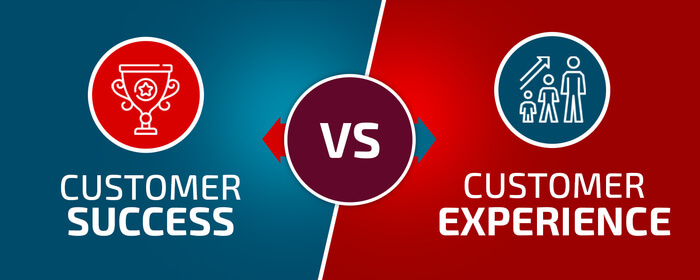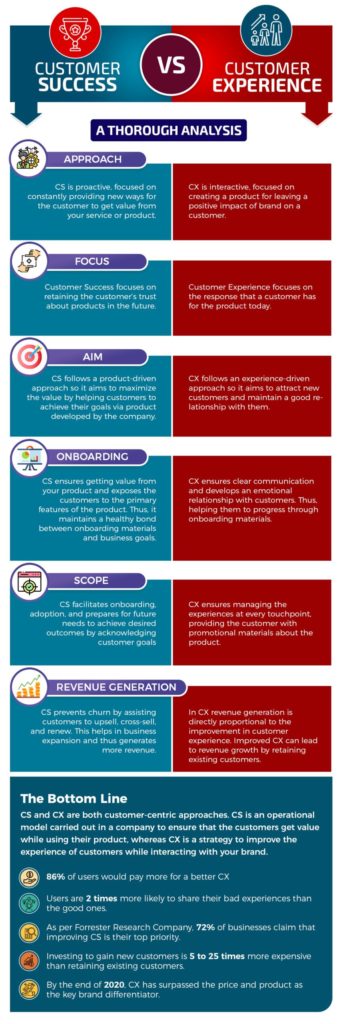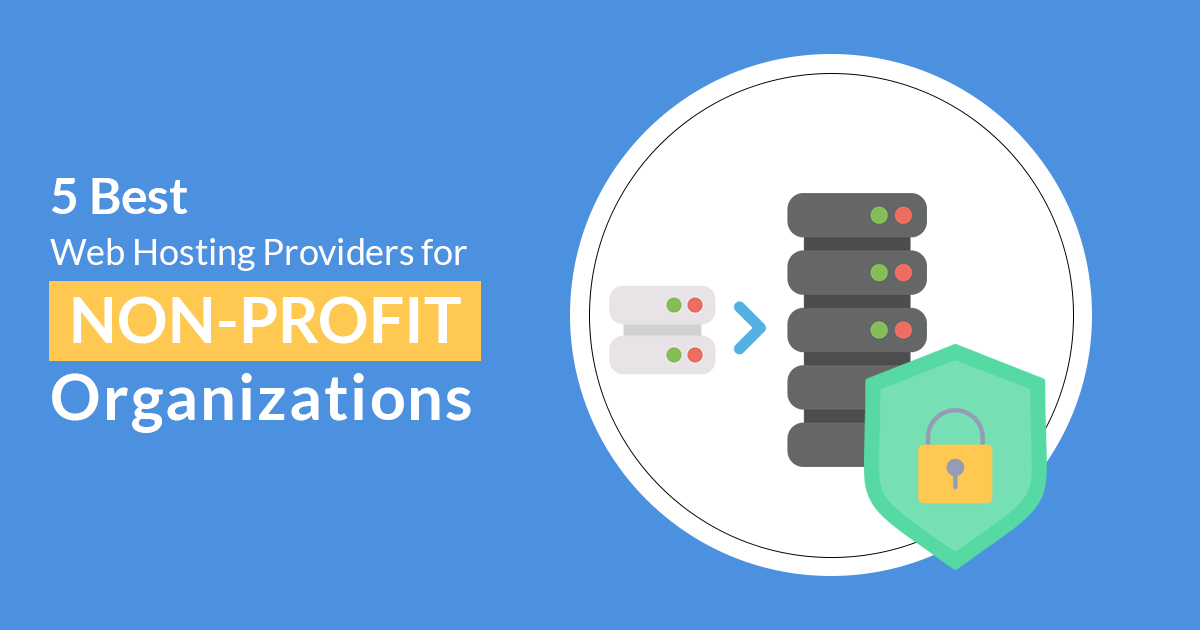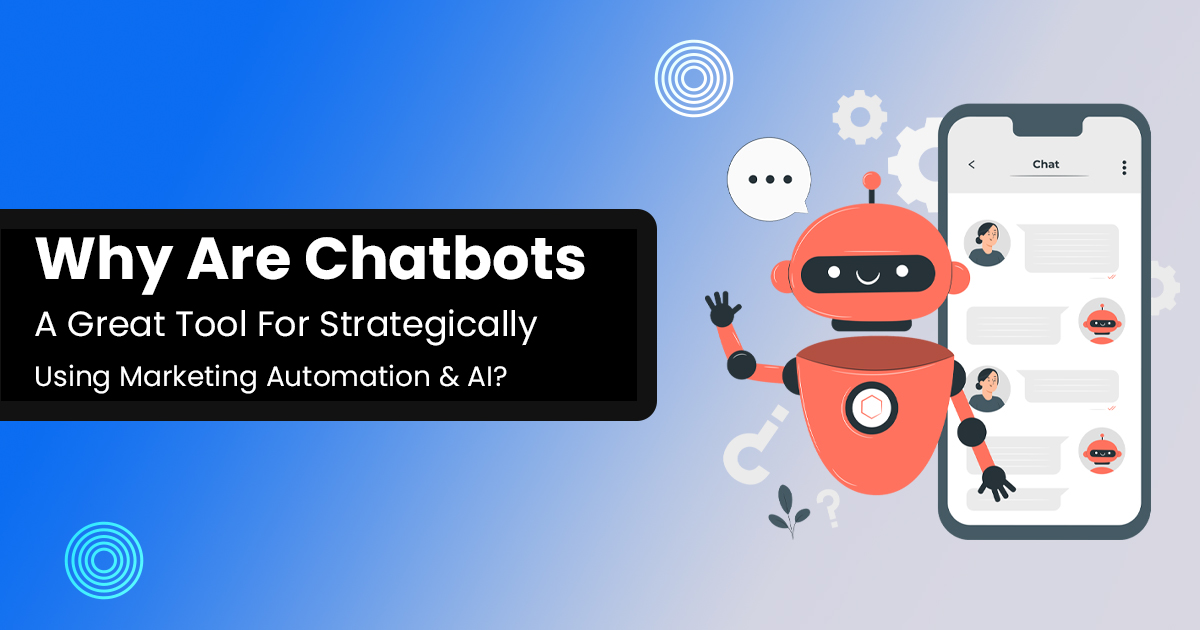A Thorough Analysis on Customer Success Vs Customer Experience

How is customer success different from customer experience? If you don’t have an answer to this question, then you are not alone. These two concepts are usually confused as there are some overlaps and some similarities which need to understand properly.
Customer success vs customer experience are both customer-centric roles and they perform distinct functions. The customer experience team (CX) works towards providing a great experience at every single level and touchpoints starting from the discovery stage to purchase and the final feedback.
Whereas, the customer success team (CS) works on achieving customer goals and helping them to get the desired outcomes with their purchased products or services.
Due to the rising customer-centric economy, enterprises want that their customers are happy at all stages of purchasing a product so that they can build and grow their customer base at all costs. There has been a need to fulfilling the highly personalized expectations of customers to reduce the churn rate.
One of the best methods to strengthen your relationship with customers is to deliver the value as with this, you will have sustainable growth in your business. Finding new opportunities to deliver great customer value is always at the heart of the customer success experience. This also shifts your company’s goal from happy customers to successful and satisfied customers.
What do you mean by customer success?

Customer success, also known as CS, is a long-term strategy where an organization focuses on creating a deeper relationship with customers and helping them achieve their goals when they purchase a particular product. It covers the entire customer lifecycle management to customer retention and growth of the company.
Customer success measures the satisfaction of your customers and your business operations when you align your business goals with your potential customers which not only increases the value of your business but it also encourages the development of mutually beneficial growth.
Your customers will enjoy sustained value while your organization will have a long-term benefit from the customer growth and customer success experience. However, to create effective customer success management, you would need someone to completely focus on that area.
A dedicated customer success team or a customer service outsourcing team will work proactively and use a data-led approach so that customers use products more efficiently. Depending on the structure and the working of a customer success team, it should provide real-time customer support and handle day-to-day tasks effectively so that customers interact with your business for a longer time.
This approach also helps businesses achieve top-level goals such as
- Increasing customer retention and loyalty to your brand
- Reducing customer churn rate
- Increasing the organization’s sales and revenue
- Boosting your customer’s lifetime value
What do you mean by customer experience?
Customer experience, also known as CX, is a perception of your customer’s experience with your brand or business. The customer experience (CX) is a key to success as it is a result of every interaction of customers with your business i.e. from navigating to your website to talking to your customer success team, receiving the product they bought and getting feedback.
Delivering a great customer experience is highly important as it will increase positive reviews and more repeat customers which will simultaneously reduce the customer return and complaints so that you achieve your customer experience goal.
Some of the benefits of delivering a great customer experience are:
- Increase the satisfaction of customers.
- Getting positive feedback, recommendations, and good word-of-mouth marketing.
- Increase the loyalty of your customers.
Customer experience encompasses all the touchpoints, such as reading the instructions manual, opening a particular product’s packaging, speaking to your customer service team, or exchanging a purchased product of your brand. Touchpoints at each level create judgment or feelings that range from happiness to disappointment.
Positive judgment such as viewing the company to be helpful or when they efficiently assisted and negative judgment is when your company provides slow customer service.
A good customer experience is achieved by:
- Understanding your customer’s positive and negative reviews and implementing a powerful strategy.
- Solving your customer’s unique challenges and specific problems.
- Collect regular feedback from customers, analyze them and act on it.
- Listening to your customer’s problems carefully and then providing unique solutions.
Customer experience is not rocket science but you can improve customer experience using psychology by asking questions to customers, listening to their feedback, take necessary actions to achieve the customer experience goal.
Lifecycle stages of customer success vs customer experience
Customer success vs customer experience and how both contribute to creating a sustainable customer relationship are identified by the actions of each customer lifecycle stage.
1. Onboarding the customers
Onboarding is to educate your customers about your products and services so that they can easily use them in their daily lives. The quicker the customer understands your products, the sooner they experience its value and began to build trust in your brand.
- Customer success – Here customers achieve value by using your products, you ensure to provide all the key features in your products and your team anticipates potential drawbacks.
- Customer experience – Here, you provide a clear line of communication to users, an easy-to-operate onboarding process, and ensure that customers understand the products completely.
2. Adoption stage
It is the second stage where customers spend most of their time. It mainly covers the working life of customers with your products and services and measures their ROI. If a customer successfully uses your products, then you will achieve your business goals.
- Customer success- Keep a check on customer behavior and how they are using your products, anticipate additional services and future needs and acknowledge the goals and milestones of customers.
- Customer experience- Ensure that customers can comfortably use your products on daily basis, and relate your product success with business success by providing customers with additional material of your product.
3. Respond to customer’s escalation
There can be obstacles in building customer relationship but the way to respond to the customer’s escalations affect your relationships. Always provide proper customized solutions to customers’ complaints or feedback and keep them informed about the escalation procedures.
- Customer success – Anticipate the problems of customers using data, solve their problems, and recheck procedures based on the feedback of customers.
- Customer experience- Provide a personalized solution to customer problems and remain calm and listen to your customers.
4. Renewal of agreement
It depends on the entire product’s journey. Every interaction or involvement of customers influences their decisions.
- Customer success – You need to focus on KPIs and goals to achieve a higher renewal rate such as the cost of churn per quarter.
- Customer experience – Personalize your renewal message by looking toward your achievements and customer goal, looking for growth opportunities, and allowing your customers to provide clear feedback.
What is the difference between CX and CS?
Let’s look at some of the differences between customer success vs customer experience.
1. Based on objective/goal
- Customer experience- The entire purpose of customer experience is to properly enhance each level of an individual’s touchpoints of the entire customer journey. Here. you try to identify issues in the buyer’s journey and find out the best possible way to make every interaction or engagement fruitful.
- Customer success- The entire purpose of customer success is to achieve the end goals of the customer’s journey. Customer success teams help the customers to achieve their goals with a purchased product or service and to build a long-term relationship with their company.
2. Based on metrics
- Customer experience- It is evaluated by using customer satisfaction score, conversion rate, net promoter score (NPS), or customer acquisition rate.
- Customer success- It is evaluated by using customer effort score, customer lifetime value, churn rate, or retention rate.
3. Based on the scope of work
- Customer experience- It is a broader concept than customer success. It focuses on developing a positive and long-term relationship with customers during the entire buying journey i.e. from the awareness stage to the feedback in the entire customer lifecycle stage.
- Customer success – It is just a part of the customer experience and it ends once the final purchase has been made. Here companies assist customers in effectively using the product so that they achieve the objective of their business.
4. Based on industry use
- Customer experience- These roles are generally found across all industries.
- Customer success- A dedicated customer success team works here that uses SaaS or B2B subscription model. Here the growth of the company is dependent upon a higher retention rate or repeat purchases so that customers can reach their goals by using the company’s products.
How do CS And CX work together?
Despite the difference between customer experience and customer success, the two are still connected. Customers are the main focus of both the disciplines and they have a similar objective at a point which is to understand the behavior of customers to earn trust and loyalty and manage the customer journey effectively.
In both cases, the loyalty of customers is measured through different metrics such as churn rate, net promoter score, or a customer satisfaction score. They both develop a customer-centric culture in the organization to compete with other industries. Thus, when both CX and CS are coordinated with one another, they will generate great results.
To sum up
Although there are certain similarities and differences in customer success vs customer experience, you don’t need to determine which discipline is better among these and which will deliver a great performance and results.
A company should strive to develop a customer-centric approach to achieve customer experience goals and customer success experiences to deliver great outcomes at each stage of buying journey.
Customer success software and customer experience software are used in getting the overall insights and to make the entire buying journey and customer experience more successful.





